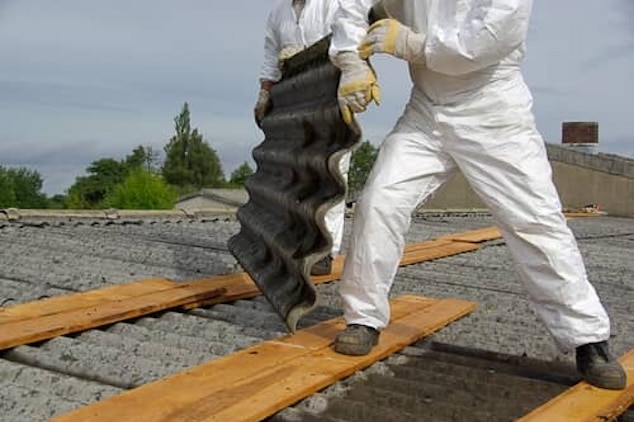

Why Is Asbestos Considered a Dangerous Material? How a once popular fiber came to be linked to health issues and the risk of developing Mesothelioma.
At this point, most people know that asbestos is a dangerous material that should be avoided at all costs. Most people also realize that asbestos is linked to a rare form of cancer known as mesothelioma, even if they don’t know exactly what that link is or why it exists.
But what exactly is it about asbestos that makes it so dangerous? And if it’s such a deadly material, why did we ever use it in the first place?
The Big Picture
Asbestos is considered dangerous primarily because of its influence on the development of mesothelioma, which is especially pronounced in groups that were habitually exposed to the material – like military veterans. This mineral substance is made up of millions of little fibers that happen to be jagged in shape. As we’ll see, this composition lends itself well to a variety of applications, but it also comes with a number of problems.
If and when this material is disturbed, these jagged fibers can disperse in the air. Although they’re practically invisible and you may not feel them, you may breathe them in, causing complications to your lungs. You may also swallow them, causing complications to your abdomen and digestive system.
Jagged asbestos fibers are released even when the material is handled responsibly, and they can be inhaled or swallowed even if you have some protective gear in place. Even if you don’t develop mesothelioma, specifically, these fibers can cause significant damage to your organs and the mesothelial lining that surrounds them.
Why Was Asbestos Ever Used?
You may wonder why asbestos was ever used, despite its dangerousness. There are two important answers to this question: first, asbestos was very useful, and second, we didn’t understand how dangerous it was.
In line with the first point, asbestos was extremely inexpensive and easy to produce. It was abundant, it was easy to work with, and it could be used for a number of applications. Asbestos was especially beneficial for insulation applications, and because it was resistant to fire, it was also used to decrease fire risks. On top of that, it had a variety of novel applications, such as being used as fake snow on movie sets. It was extremely valuable in military applications as well.
In line with the second point, nobody really understood just how impactful asbestos fibers could be. Scientists and engineers didn’t understand how merely handling asbestos could cause a great dispersal of fibers, and they certainly didn’t understand how those fibers could result in devastating health consequences decades in the future. That’s partially because diseases like mesothelioma typically unfold only after a latency period, which lasts many years.

Asbestos Exposure and Mesothelioma Risk
As you might imagine, prolonged and chronic exposure to asbestos can increase your risk of developing mesothelioma, but almost any amount of asbestos exposure can introduce you to a risk of developing mesothelioma. The jagged fibers associated with asbestos can dig into the mesothelial lining around your organs, which then triggers a series of biological actions that result in cell mutation. Once the disease begins to fully manifest, it typically begins to spread aggressively. Because there is no cure or universally reliable treatment strategy, the disease is fatal for most.
If you’ve ever been exposed to asbestos, you need to be on the lookout for warning signs of mesothelioma. You may not be able to prevent or get rid of the disease, but you can delay it spreading and minimize some of the symptoms associated with it. The earlier you notice warning signs of mesothelioma, the more proactively and effectively you can act.
Also note that there are many different types of mesothelioma. The most common variety is plural mesothelioma, which affects the lungs – as most people who are exposed to asbestos breathe in at least some jagged fibers. However, peritoneal mesothelioma and pericardial mesothelioma, affecting the abdomen and heart, respectively, are also possibilities.
The Good News
There is good news on multiple fronts here, however. First, as we’ve come to recognize the dangers of asbestos, we’ve also acted to outlaw it. Asbestos is banned in most developed countries for most applications, and it’s relatively rare to encounter it in normal life. Second, we’ve gotten much better at asbestos abatement, so we can safely clean up asbestos when we do find it. Third, although there’s still much we don’t understand about mesothelioma, we’ve come to learn much about this disease, and we’re much better capable of treating it early. We may not be able to prevent the inevitable, but we can stall it and improve quality of life in the meantime.
Asbestos is an inherently dangerous material that we greatly underestimated in the past. But now that we better understand how it works and how it affects human health, we’re paving a path to a brighter future.






